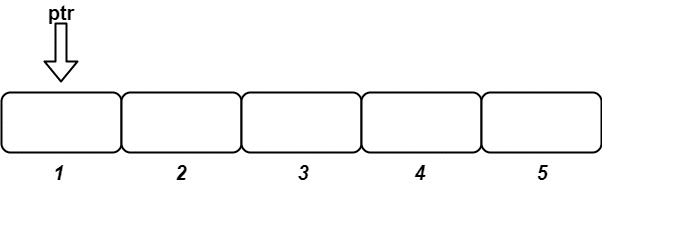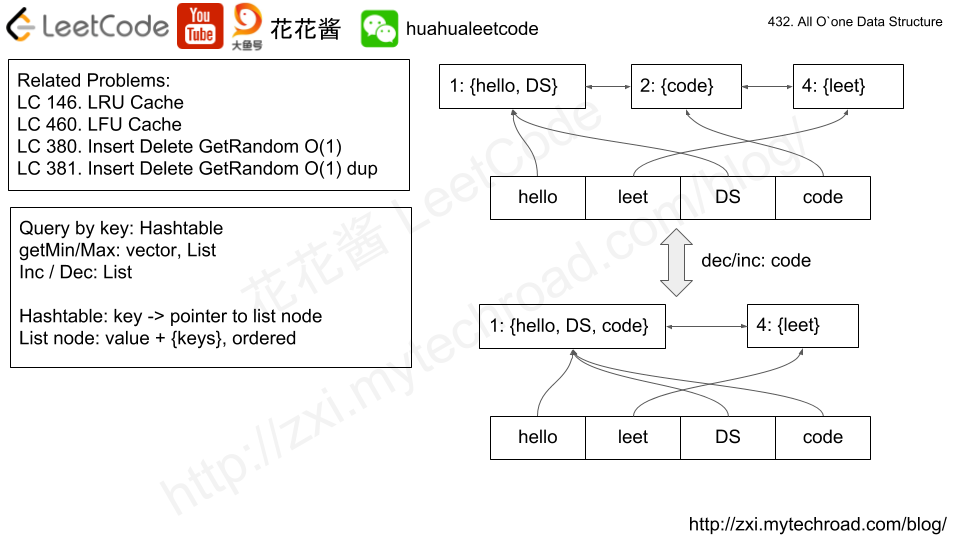You are given two integers, m and k, and a stream of integers. You are tasked to implement a data structure that calculates the MKAverage for the stream.
The MKAverage can be calculated using these steps:
- If the number of the elements in the stream is less than
myou should consider the MKAverage to be-1. Otherwise, copy the lastmelements of the stream to a separate container. - Remove the smallest
kelements and the largestkelements from the container. - Calculate the average value for the rest of the elements rounded down to the nearest integer.
Implement the MKAverage class:
MKAverage(int m, int k)Initializes the MKAverage object with an empty stream and the two integersmandk.void addElement(int num)Inserts a new elementnuminto the stream.int calculateMKAverage()Calculates and returns the MKAverage for the current stream rounded down to the nearest integer.
Example 1:
Input ["MKAverage", "addElement", "addElement", "calculateMKAverage", "addElement", "calculateMKAverage", "addElement", "addElement", "addElement", "calculateMKAverage"] [[3, 1], [3], [1], [], [10], [], [5], [5], [5], []] Output [null, null, null, -1, null, 3, null, null, null, 5]Explanation MKAverage obj = new MKAverage(3, 1); obj.addElement(3); // current elements are [3] obj.addElement(1); // current elements are [3,1] obj.calculateMKAverage(); // return -1, because m = 3 and only 2 elements exist. obj.addElement(10); // current elements are [3,1,10] obj.calculateMKAverage(); // The last 3 elements are [3,1,10]. // After removing smallest and largest 1 element the container will be
[3]. // The average of [3] equals 3/1 = 3, return 3 obj.addElement(5); // current elements are [3,1,10,5] obj.addElement(5); // current elements are [3,1,10,5,5] obj.addElement(5); // current elements are [3,1,10,5,5,5] obj.calculateMKAverage(); // The last 3 elements are [5,5,5]. // After removing smallest and largest 1 element the container will be[5]. // The average of [5] equals 5/1 = 5, return 5
Constraints:
3 <= m <= 1051 <= k*2 < m1 <= num <= 105- At most
105calls will be made toaddElementandcalculateMKAverage.
Solution 1: Multiset * 3
Use three multiset to track the left part (smallest k elements), right part (largest k elements) and mid (middle part of m – 2*k elements).
Time complexity: addElememt: O(logn), average: O(1)
Space complexity: O(n)
C++
|
1 2 3 4 5 6 7 8 9 10 11 12 13 14 15 16 17 18 19 20 21 22 23 24 25 26 27 28 29 30 31 32 33 34 35 36 37 38 39 40 41 42 43 44 45 46 47 48 49 50 51 52 53 54 55 56 57 58 59 60 61 62 63 64 65 66 67 68 |
class MKAverage { public: MKAverage(int m, int k): sum(0), m(m), k(k), n(m - 2*k) {} void addElement(int num) { if (q.size() == m) { remove(q.front()); q.pop(); } q.push(num); add(num); } int calculateMKAverage() { return (q.size() < m) ? -1 : sum / n; } private: void add(int x) { left.insert(x); if (left.size() > k) { auto it = prev(end(left)); sum += *it; mid.insert(*it); left.erase(it); } if (mid.size() > n) { auto it = prev(end(mid)); sum -= *it; right.insert(*it); mid.erase(it); } } void remove(int x) { if (x <= *rbegin(left)) { left.erase(left.find(x)); } else if (x <= *rbegin(mid)) { sum -= x; mid.erase(mid.find(x)); } else { right.erase(right.find(x)); } if (left.size() < k) { auto it = begin(mid); sum -= *it; left.insert(*it); mid.erase(it); } if (mid.size() < n) { auto it = begin(right); sum += *it; mid.insert(*it); right.erase(it); } } queue<int> q; multiset<int> left, mid, right; long sum; const int m; const int k; const int n; }; |

